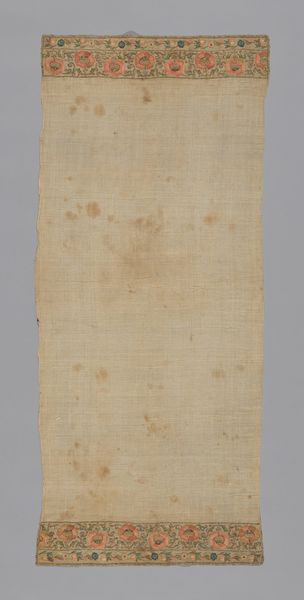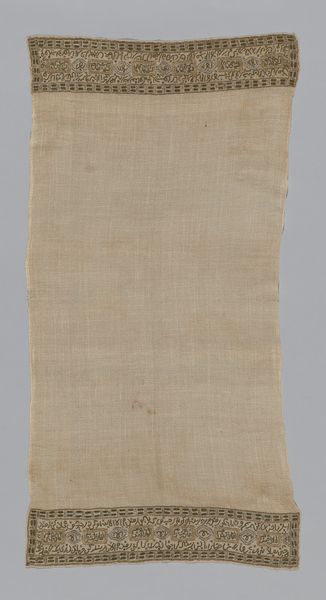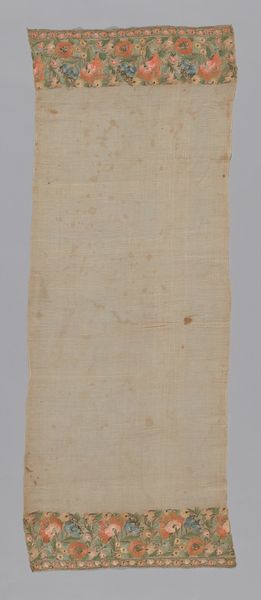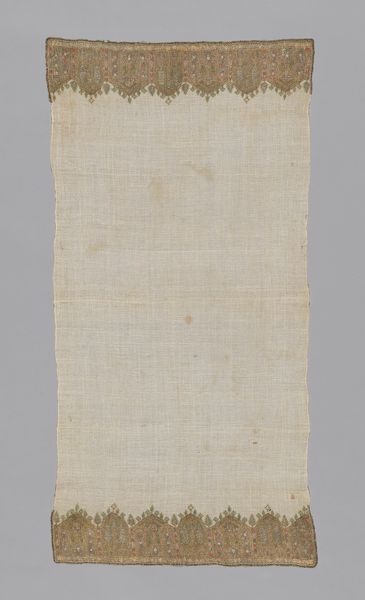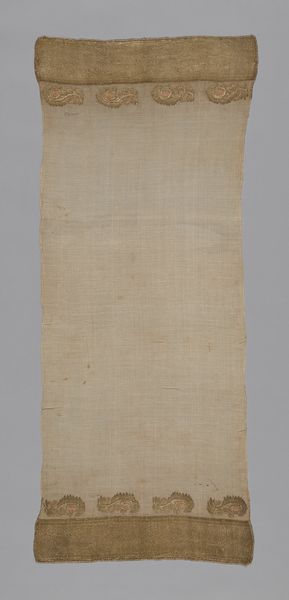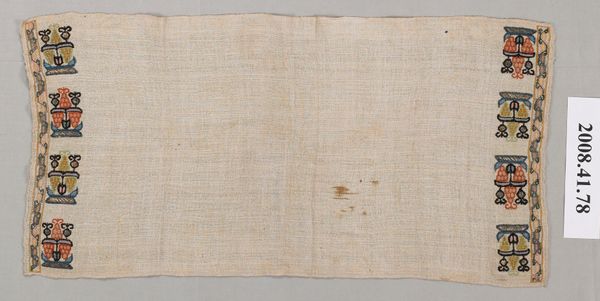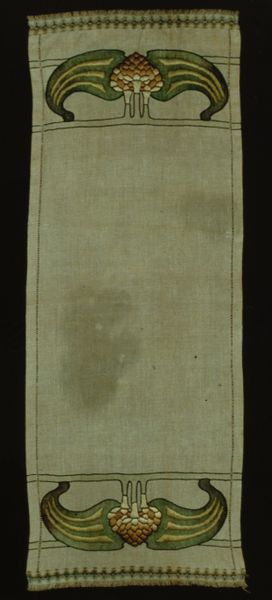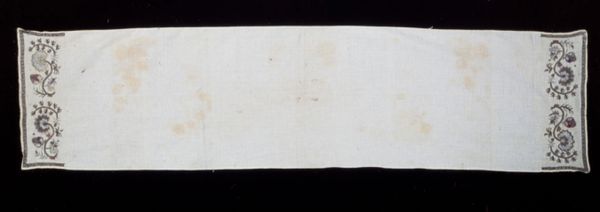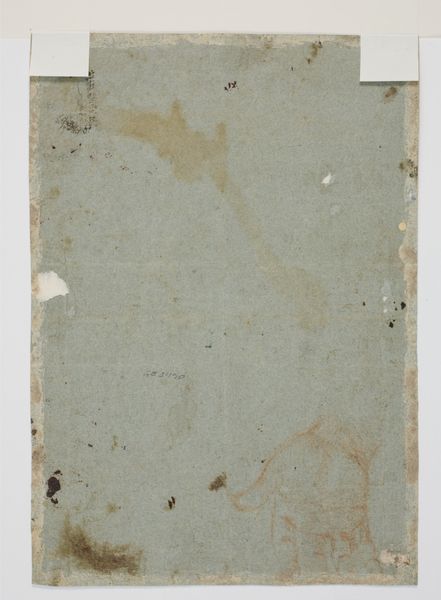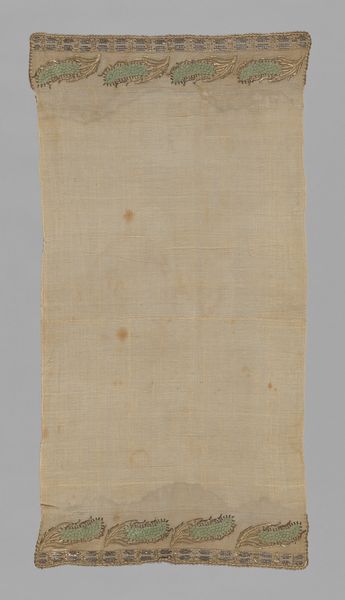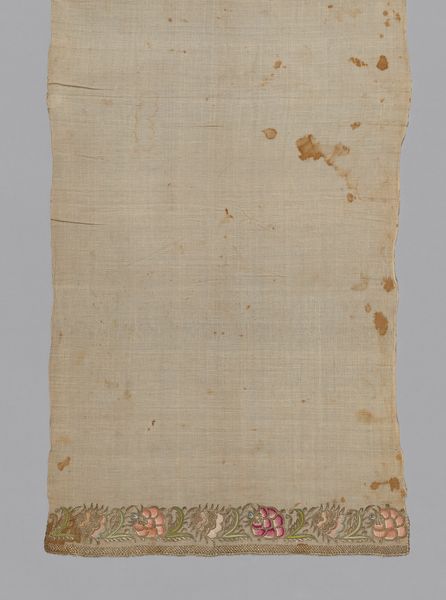
fibre-art, weaving, textile
#
fibre-art
#
weaving
#
textile
#
romanticism
#
decorative-art
Dimensions: 127.2 × 67 cm (50 1/8 × 26 3/8 in.)
Copyright: Public Domain
Editor: This object, "Towel or Napkin" from the 19th century, artist unknown, resides at the Art Institute of Chicago. The weaving and fiber art construction give it a unique textile quality. It feels incredibly intimate, almost domestic, despite being behind glass. What structural aspects particularly strike you? Curator: The first thing I note is the symmetry, immediately destabilized by the random spattering across the main field. This juxtaposition creates a powerful tension. Observe how the decorative borders at the top and bottom employ repetitive floral motifs, typical of decorative arts during this period, which contain a Romantic essence with it’s repetitive pattern. Editor: So the appeal really comes from the surface itself— the pattern struggling against the... marks? Curator: Precisely! These seemingly random imperfections offer a disruption to the imposed symmetrical composition of decorative-art. They interrupt what could be read as the intention toward ideal perfection, speaking volumes about process and use over time. Note, too, how the artist, or craftsperson, uses these framing embellishments and then allows space for a visual incident to take hold within the central rectangle. How does that space speak to you? Editor: I see now how it introduces a visual language beyond mere decoration! The ‘accidental’ qualities emphasize intention and material. It really challenges what I previously thought about Romanticism, and brings a completely new perspective of decorative-art. Curator: Indeed! By analyzing these structural elements, we've moved beyond simple aesthetics and uncovered some intricate visual dialogues. The piece has more to tell us.
Comments
No comments
Be the first to comment and join the conversation on the ultimate creative platform.

